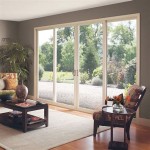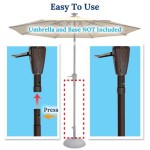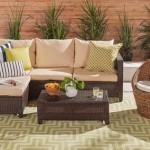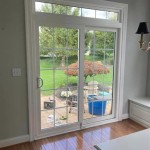Enhancing Your Outdoor Living Space: A Comprehensive Guide to Patio Swings
Patio swings represent a classic and inviting addition to any outdoor living area. They offer a relaxing space for individuals to unwind, enjoy the fresh air, and connect with nature. Selecting the right patio swing requires careful consideration of various factors, ranging from material and style to size and safety. This article provides a comprehensive overview of patio swings, exploring the key elements to consider before making a purchase, ensuring a comfortable and aesthetically pleasing addition to your patio.
Beyond mere seating, a patio swing transforms a patio into a more inviting and functional space. It can serve as a focal point for social gatherings or a personal sanctuary for quiet contemplation. The gentle swaying motion of a swing is inherently soothing, promoting relaxation and reducing stress. Furthermore, aesthetically pleasing patio swings can significantly enhance the overall visual appeal of an outdoor area, complementing existing furniture and landscaping.
The availability of diverse styles and designs allows homeowners to personalize their patio space. Options range from traditional wooden swings with classic charm to modern metal frames with sleek lines. Upholstery choices are equally varied, offering a spectrum of colors, patterns, and materials to match individual preferences and complement the existing décor. Careful planning and selection therefore become important aspects of selecting the right patio swing.
Understanding Different Types of Patio Swings
The market offers a wide array of patio swing types, each with its unique characteristics, advantages, and disadvantages. Understanding these differences is crucial for making an informed decision. The most common types include porch swings, glider swings, and swing chairs. Each type offers a distinctive swinging motion and structural design.
Porch swings, traditionally suspended from a porch ceiling with chains or ropes, embody a classic image of relaxation. They typically feature a bench-style seat that can accommodate multiple individuals. The swinging motion is generated by pushing off with the feet or leaning back and forth. The simplicity of the design and the communal seating it provides make porch swings a popular choice for families and social gatherings.
Glider swings, in contrast, offer a smoother, gliding motion. Instead of being suspended, they are attached to a frame that allows the seat to slide back and forth. This mechanism eliminates the need for pushing off and provides a more consistent and gentle swinging experience. Glider swings are often considered more comfortable and less prone to the jerky movements sometimes associated with traditional porch swings. They are often appreciated by those who prefer a subdued and relaxing motion to their relaxation sessions.
Swing chairs, often referred to as hanging chairs or egg chairs, represent a more contemporary option. They typically feature a single-person seat suspended from a frame or ceiling. These swings offer a more enclosed and personal space. The design can range from open, woven structures to fully enclosed pods. They provide a unique aesthetic, offering a comfortable and private space to relax and unwind. The enclosed shapes can provide a greater sense of privacy and seclusion.
Key Factors to Consider When Choosing a Patio Swing
Selecting the ideal patio swing involves a careful evaluation of several key factors. These include material durability, weight capacity, comfort, style, and available space. Each of these factors contributes significantly to the overall satisfaction and longevity of the purchase. Neglecting any of these considerations could result in choosing a swing that doesn't meet your needs or withstand the outdoor elements.
Material durability is paramount, especially for outdoor furniture. Patio swings are exposed to various weather conditions, including sunlight, rain, and wind. Materials like treated wood, powder-coated steel, and aluminum are known for their resistance to weathering and corrosion. Wood offers a classic aesthetic but requires regular maintenance to prevent rot and decay. Metal frames are generally more durable and require less upkeep. All-weather wicker is an option that combines a natural aesthetic with weather resistance.
Weight capacity is another critical consideration. Ensure that the swing can safely accommodate the intended users. Exceeding the weight limit can compromise the structural integrity of the swing and pose a safety hazard. Carefully review the manufacturer's specifications and choose a swing with a weight capacity that exceeds your anticipated needs. Overestimation is better than underestimation in such cases to avoid damage or accidents.
Comfort is a subjective but essential factor. Consider the seat depth, back support, and cushioning. Some swings come with padded cushions, while others feature woven or slatted seats. If comfort is a high priority, opt for a swing with ample cushioning and ergonomic design. Consider the material and properties of cushions as well, as they can attract or repel water, dust, and sunlight.
Style should complement the existing patio décor. Choose a swing that aligns with your personal taste and enhances the overall aesthetic of your outdoor space. Consider the color, design, and materials of the swing in relation to your other patio furniture and landscaping. A cohesive design creates a visually appealing and inviting outdoor environment.
Available space dictates the size and type of swing you can accommodate. Measure the dimensions of your patio and ensure that there is ample space for the swing to move freely without obstructing walkways or other furniture. Consider the footprint of the swing and the required clearance for swinging motion. Choose a swing that fits comfortably within your available space and allows for easy movement around it.
Installation and Maintenance of Patio Swings
Proper installation and regular maintenance are crucial for ensuring the safety, longevity, and appearance of a patio swing. Installation methods vary depending on the type of swing and the existing structure. Maintenance involves cleaning, inspection, and occasional repairs.
Porch swings typically require secure attachment to a ceiling joist or support beam. Ensure that the supporting structure is strong enough to bear the weight of the swing and its occupants. Use heavy-duty hardware and follow the manufacturer's instructions carefully. If you are unsure about your ability to install the swing safely, consult a professional contractor.
Glider swings and swing chairs usually come with their own frames, simplifying installation. Ensure that the frame is assembled correctly and placed on a level surface. Check all bolts and connections regularly to ensure they are tight and secure. Placement should consider stability, with the frame ideally placed on a flat, even surface.
Regular cleaning helps to prevent the buildup of dirt, dust, and mildew. Wipe down the swing with a damp cloth and mild soap. Use a brush to remove stubborn stains. Protect the swing from the elements when not in use. Consider using a cover or storing the swing indoors during harsh weather conditions. Covers are particularly important when the swing is made of wood, which will need more protection against the elements.
Inspect the swing regularly for signs of wear and tear. Check the chains, ropes, or frame for corrosion, cracks, or fraying. Replace any damaged parts immediately. Lubricate moving parts to prevent squeaking and ensure smooth operation. Seasonal inspections are recommended to identify and address potential problems before they escalate.
For wooden swings, apply a sealant or stain periodically to protect the wood from moisture and UV damage. This will help to prevent rot and maintain the swing's appearance. Follow the manufacturer's recommendations for specific care instructions. Regular maintenance ensures that the swing remains safe, comfortable, and visually appealing for years to come.
Choosing the right patio swing requires careful consideration of your personal preferences, budget, and the characteristics of your outdoor space. By considering the type of swing, the materials used, weight capacity, comfort, style, and installation requirements, individuals can select a patio swing that provides years of enjoyment and enhances their outdoor living experience. The right swing can provide a relaxing space and significantly improve the overall aesthetic appeal of any patio.

Aecojoy Brown 3 Person Wicker Outdoor Patio Swing With Cushion And Pillows 16093br Hd01 The Home Depot

Costway 2 Seat Patio Porch Swing With Adjustable Canopy Storage Pockets Brown Target

Erinnyees Outdoor Patio Porch Swing 3 Seat Extended Edition Adjustable Backrest Rotatable Hardtop Canopy Chair With Cushions And Pillow For Backyard Lawn Beige Com

Costway Outdoor 3 Person Porch Swing Chair Aluminum Frame Adjust Canopy Patio Target

The Best Free Standing Arbor Swings Guide Porch Swing With Stand Pergola Patio

Outsunny Heavy Duty Metal 3 Seater Outdoor Swing Chair Garden Hammock Bed With Canopy And 2 Pillows Beige Aosom

Homrest 3 Seat Outdoor Porch Swing With Adjustable Canopy And Backrest Patio Chair Weather Resistant Steel Frame Comfortable Cushions For Balcony Garden Deck Poolside Com

Noble House Tulip 76in 2 Person Teak Stained Wood Patio Swing 5305 The Home Depot

5 Patio Swing With Columns Design Able Plan Mypatiodesign Com

Porch Swings Fire Pit Circle Patio Outdoor Landscaping Backyard








